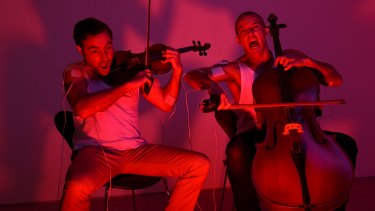By Nick Galvin for the Sydney Morning Herald
Step through the door and you’re in a small, bare, unprepossessing room. The walls are white and the floor is concrete. There are two windows and a door. On a fixed table in the corner is a complicated-looking headset with built-in headphones.
Called Edge Of The Present, it’s an installation that combines art, research and mental health therapy in astonishing ways, with no clear boundary between any of these elements.




















